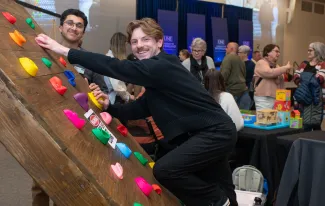
The annual Expo highlights UNE's commitment to preparing health professionals to lead with innovation and empathy
The Master of Science in Occupational Therapy (M.S.O.T.) program at the University of New England brought creativity to life at its annual Pediatric Adaptive Projects Expo on Tuesday, April 15, in Arthur P. Girard Innovation Hall on UNE’s Portland Campus for the Health Sciences.
A signature event of the program, the Expo featured more than 25 adaptive projects designed and built by first-year graduate occupational therapy (OT) students from the Class of 2026 to support children and families navigating sensory processing differences, neurodevelopmental conditions, and motor skill development. Each interactive project — from sensory tools and climbing structures to a virtual Minecraft therapy adventure — was developed in partnership with local clinicians or community organizations and will be donated to families and OT practices following the event.

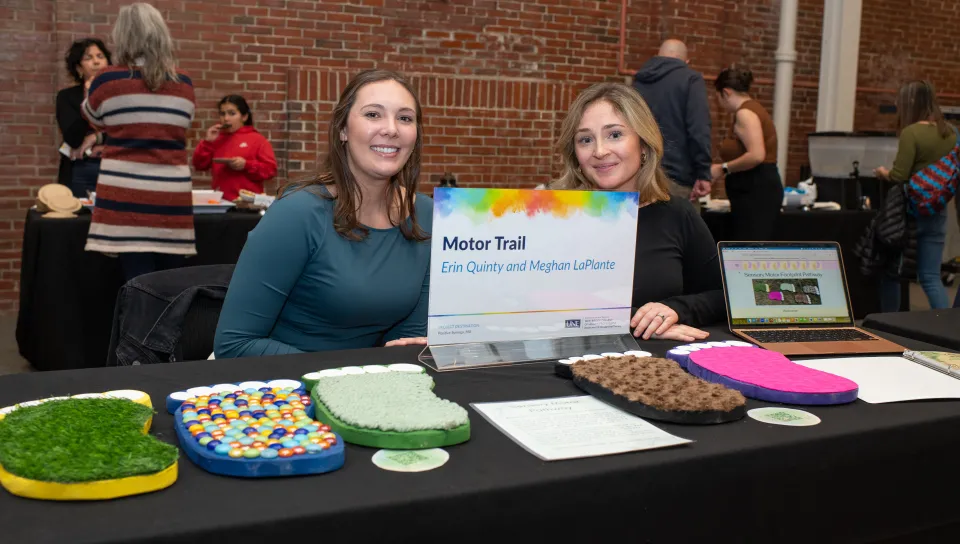
(Left): A child demonstrates a “therapeutic Minecraft adventure” featuring virtual reality, created by student Jared Benoit; (Right): Meghan LaPlante and Erin Quinty showcase their sensory-motor footprint pathway designed to introduce children to different walking surfaces.
“All of the projects on display serve a real-world purpose — they are designed to support the unique needs of individual children while enabling our students to apply evidence-based strategies and design thinking,” said Jamie Harmon, MOTR/L, NTP, assistant clinical professor of occupational therapy at UNE. “This event is a celebration of innovation, empathy, and our students’ growing capacity to make a difference through occupational therapy.”
Among this year’s creations was a full-body pin press tool designed by Alexis Tardy to help children regulate their sensory systems through deep sensory input — a fun, tactile experience that also builds core strength and motor planning.
“This experience allowed me to connect concepts from lecture to real-world application in a creative way,” Tardy said. “UNE helped push me outside of my comfort zone and use my clinical reasoning to produce an innovative resource that improves occupational performance.”
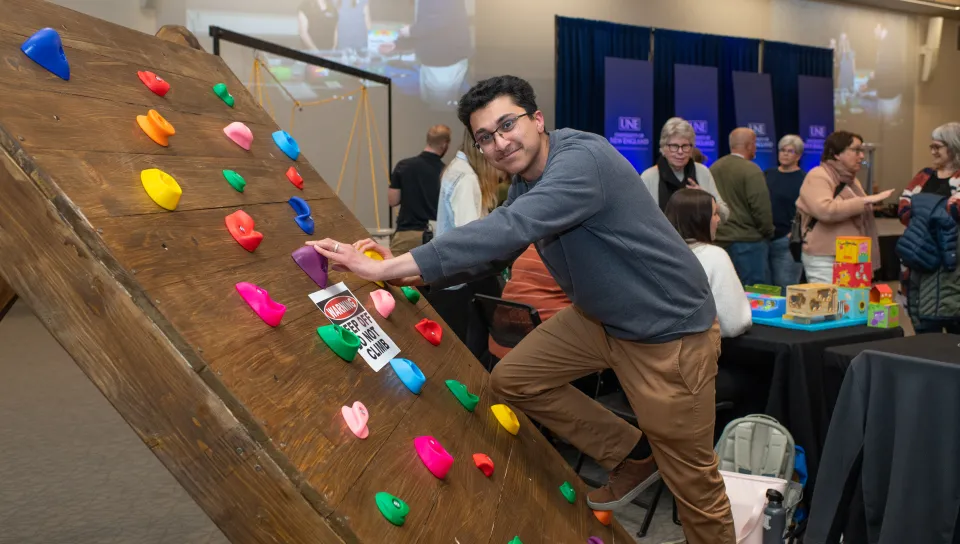
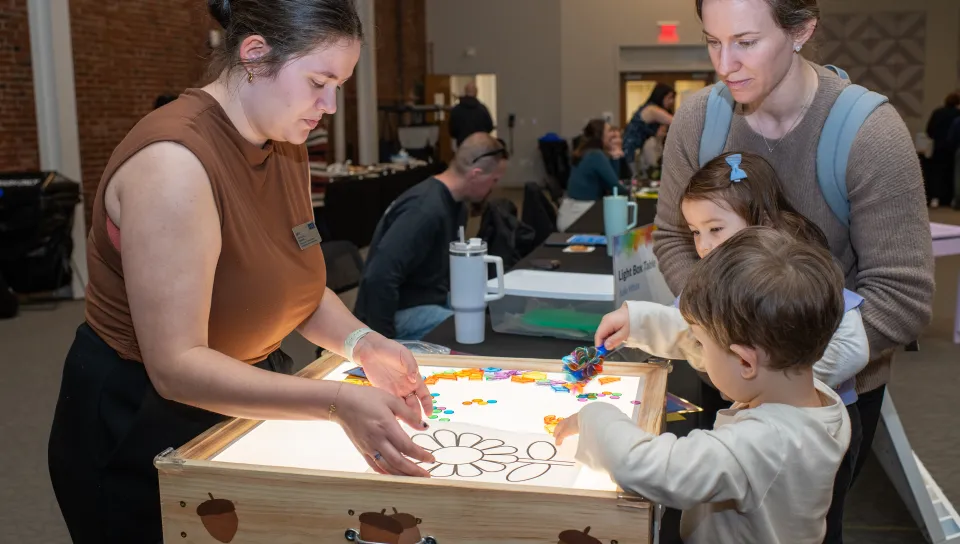
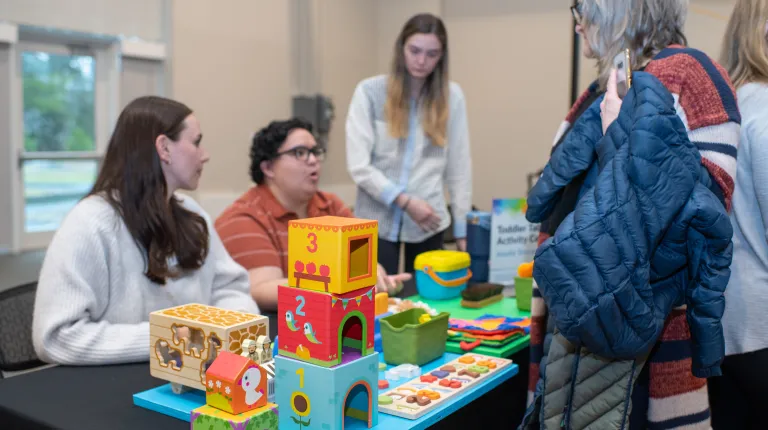
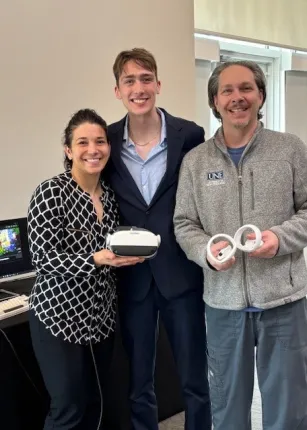
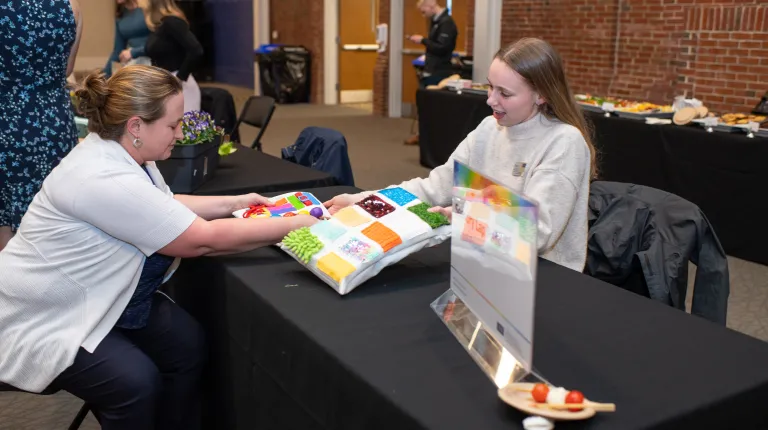
Several of this year’s projects were made possible with support from the Interprofessional Simulation and Innovation Center, the Office of Innovation, and P.D. Merrill Makerspace at UNE.
As Harmon noted, the Expo not only showcases student innovation, but also reinforces UNE’s commitment to preparing future professionals to lead with empathy, collaboration, and hands-on problem solving.
“Each project — no matter how playful or imaginative — underscores a serious goal: improving occupational engagement and helping children more fully participate in the activities that bring joy, growth, and independence,” she said.
Corey Markland and Jack Rogers designed a custom climbing structure in collaboration with KidShine, a pediatric OT practice in Rowley, Massachusetts. The equipment encourages balance, motor planning, and sensory integration — all while keeping kids engaged.
“I loved this process,” said Markland. “It was awesome transferring my building skills from a previous profession to my new career as an OT. Looking back on the process and each step of the way makes me realize how important collaboration is in health care."
Rogers added that the project demonstrated the value of thinking beyond traditional boundaries as an occupational therapist.
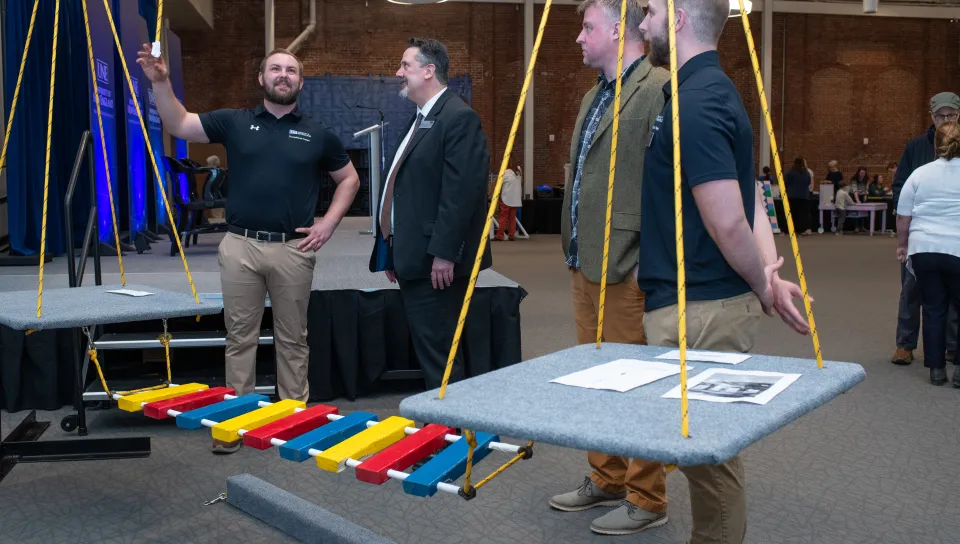

(Left): Corey Markland and Jack Rogers demonstrate their custom climbing structure, complete with sensory elements and an interchangeable, playground-style bridge; (Right): Alexis Tardy discusses the full-body pin press tool she designed to help children regulate their sensory systems.
For students Amelia Teta and Brianna Michaud-Nolan, the Expo was an opportunity to design a toddler activity table tailored to support early standing, cruising, and fine motor play. Created in response to a request from Gallant Therapy Services in northern Maine, the project gave them a deeper appreciation for pediatric OT and teamwork.
“Being able to build a tangible item that we know is going to be implemented in OT practice has been a highly rewarding experience,” Michaud-Nolan said.
Students behind a sensory-motor footprint pathway, intended for another clinic in Massachusetts, shared similar sentiments.
“This profession offers the opportunity to approach interventions with creativity and flexibility,” wrote duo Meghan LaPlante and Erin Quinty. “Even with limited resources, we developed skills to design meaningful, client-centered solutions.”